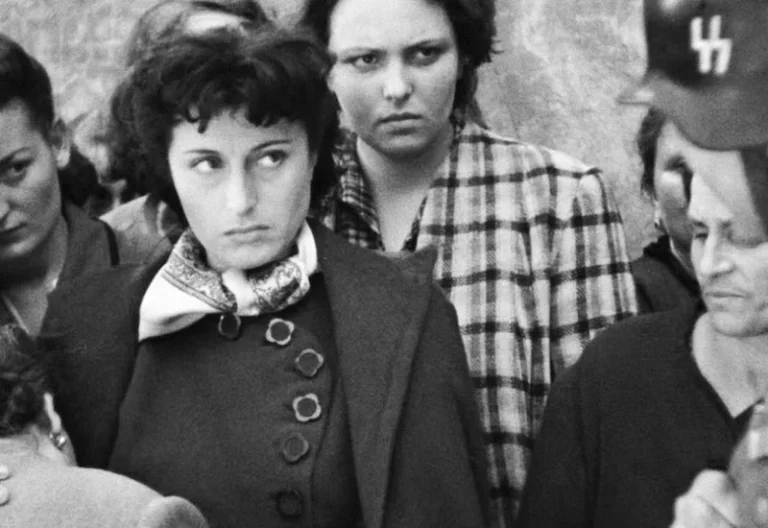defining the arthouse film
Arthouse film refers to a category of cinema known for its artistic and experimental nature, usually produced outside the major film studio system. These films prioritize artistic expression over commercial appeal, and are associated with independent filmmaking. They are frequently screened at film festivals and specialized theaters rather than mainstream cinemas.
Published by: CinemaWaves Team | Filed Under: Film Blog
History and the Development
The roots of arthouse cinema can be traced to the silent film era, where pioneers like Sergei Eisenstein, D.W. Griffith, and F.W. Murnau began experimenting with the medium’s form. Eisenstein’s innovative use of montage in films like “Battleship Potemkin” (1925) revolutionized storytelling, emphasizing the power of editing to create emotional impact and meaning. Meanwhile, Murnau’s “Nosferatu” (1922) showed his mastery of visual storytelling, using expressionistic techniques to convey psychological depth and atmosphere, demonstrating how film could transcend mere entertainment to become a form of artistic expression.
The silent era also saw the emergence of avant-garde cinema, with surrealist directors like Luis Bunuel and Man Ray pushing the boundaries of narrative and form. Bunuel’s collaboration with Salvador Dali on “Un Chien Andalou” (1929) produced one of the most iconic and surreal films of the era, today famous for its dreamlike imagery and nonlinear structure. Man Ray’s experimental films, like “Le Retour a la Raison” (1923), used abstract visuals and innovative techniques to explore the artistic possibilities of film.
As cinema transitioned into the sound era, these early experiments in form and technique made the way for the development of arthouse cinema as a distinct genre. The groundwork laid by these pioneering filmmakers established the principles of artistic innovation, personal vision, and thematic depth that would come to define arthouse films in the following decades.

Expansion of Arthouse Film
European influence: Post-World War II Europe became a hotbed for the development of arthouse cinema, particularly through movements like Italian Neorealism and French New Wave. Neorealism, with films like Rossellini’s “Rome, Open City” (1945) and De Sica’s “Bicycle Thieves” (1948), focused on the harsh realities of everyday life, while featuring non-professional actors and on-location shooting. In the late 1950s and 1960s, French New Wave directors like Francois Truffaut, Jean-Luc Godard, and Agnes Varda revolutionized cinema with their experimental techniques, including jump cuts, non-linear narratives, and a focus on personal expression.
New Hollywood: The influence of European arthouse cinema extended to the United States, where it helped ignite the New Hollywood movement in the late 1960s and 1970s. This era saw American filmmakers gaining unprecedented creative control over their projects, leading to a wave of innovative and often controversial films. Directors like Martin Scorsese, Francis Ford Coppola, and Robert Altman embraced the auteur theory and infused their films with personal style and thematic depth. Films like Scorsese’s “Taxi Driver” (1976) and Coppola’s “The Godfather” (1972) exemplified this blend of arthouse sensibilities with mainstream appeal.
Global expansion: By the 1980s and 1990s, arthouse cinema had become a global phenomenon, with significant contributions from filmmakers across Asia, Latin America, and other regions. Japanese director Akira Kurosawa, Parallel Cinema filmmaker Satyajit Ray, and Hong Kong New Wave‘s Wong Kar-wai brought their unique cultural perspectives and storytelling techniques to the forefront of international cinema.

Characteristics of
Arthouse film
Artistic expression: Arthouse films prioritize the director’s artistic vision of exploring complex themes, experimental techniques, and unconventional storytelling methods. They aim to provoke emotional responses rather than simply entertain.
Narrative and style: These films employ non-linear narratives, ambiguous endings, and deep character studies, and may use innovative cinematography, editing, and sound design to create a unique viewing experience.
Target audience: Arthouse films cater to a niche audience that appreciates cinema as an art form. This audience usually seeks films that challenge conventional norms and provide deeper intellectual and emotional engagement.
Distribution and exhibition: Films have limited releases, premiering at film festivals before being shown in independent theaters. They may also find audiences through streaming platforms dedicated to independent and foreign films.
Importance of arthouse film
In recent years, arthouse cinema continues to thrive and evolve, with contemporary directors like Dogme 95‘s Lars von Trier and New Mexican Cinema‘s Alejandro Gonzalez Inarritu, gaining international acclaim for their work. The rise of digital filmmaking and streaming platforms has provided new opportunities for arthouse filmmakers to reach wider audiences while maintaining their artistic integrity. Festivals such as Cannes, Venice, Berlin and Sundance remain crucial platforms for arthouse films.
Arthouse cinema stands as a vital and dynamic segment of the film landscape, offering a distinct alternative to mainstream commercial cinema. It has been instrumental in advancing the art of filmmaking, pushing boundaries and introducing innovative techniques. Its influence extends beyond niche audiences, inspiring mainstream filmmakers to embrace different storytelling approaches and deeper thematic explorations.
These films serve as cultural artifacts, capturing perspectives and experiences from around the world. They provide insights into socio-political climates, cultural nuances, and individual stories that might otherwise be overlooked. In doing so, arthouse cinema has inspired the emergence of numerous influential film movements globally.
Refer to the main page for more educational insights on filmmaking and cinema history.
German Expressionism stands out as one of the most distinctive styles in the era of silent film. Expressionism, as an artistic movement, originally emerged in poetry…
In the late 1960s and throughout the 1970s, until mid 1980s, a cinematic revolution unfolded in Hollywood that would forever change the landscape of the film industry. American New..
In the aftermath of World War II, Italy was a country in ruins, both physically and economically. Amidst the rubble and despair, a group of visionary filmmakers arose to…
Or La Nouvelle Vague, is one of the most iconic and influential film movements in the history of cinema. Emerging in the late 1950s and flourishing throughout the 1960…
Pre-Code Hollywood is a period in the American film industry between the widespread adoption of sound in 1929 and the enforcement of the Motion Picture Production code…
Auteur theory is a critical framework in film studies that views the director as the primary creative force behind a film, often likened to an “author” of a book. This theory suggests…






